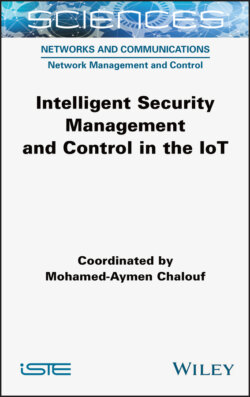Читать книгу Intelligent Security Management and Control in the IoT - Mohamed-Aymen Chalouf - Страница 25
1.4.2. Decision-making flowchart
ОглавлениеThe decision-making module, detailed in section 1.4.1, makes it possible to select the most appropriate access network (M-RAN) or the radio channel (CRN). This selection depends on many contextual parameters, which include characteristics of the radio environment, application needs, object capacities, etc. In our case, selecting an access network or CR channel means selecting all the parameters that characterize transmission. In fact, an access network can be considered as one candidate channel among others. This is a key element for guaranteeing that our suggestion functions in all possible cases (as Figure 1.2 shows). The n candidate networks/channels detected are written C1, C2, C3, …, Cn. On each channel (Ci), it is possible to transmit with the help of m modulations M1, Mj, Mm. Each Ci channel (Figure 1.2) is characterized by the probability of availability Ai, the occupation rate Oi, the bandwidth, the delay, the loss and the energy cost. Each channel is also characterized by one or more transmission models (MODi,m, where i designates the channel and m designates the modulation and coding).
Figure 1.2. General context of decision-making
The suggested multicriteria decision-making module is based on the concept of utility to reduce the complexity of such a decision. The utility function used to calculate the scores is U (x) =1− e–αx with x the parameter of the decision vector and α its corresponding weight (α > 0). For x ≥ 0, U(x) ∈ [0, 1].
The suggested selection algorithm is formed of the following stages. The first stage consists of verifying the availability of the different channels detected to eliminate poor candidates that have an availability probability below a defined threshold or whose availability time is less than a given duration. This preselection makes it possible to avoid unhelpful score calculation. At the second stage, the channels selected during the first stage are classed according to their energy scores. At the third stage, the decision-making module calculates the QoS score for each selected channel. After having calculated scores linked to QoS and to energy, the total score is calculated for each channel selected depending on the weight given to each aspect considered: QoS and energy. This is stage 4. The attribution of weight to criteria should reflect the importance of each decision-making criteria depending on the overall context (application, battery, etc.). Finally, the selected channel will be the candidate with the highest total score.
